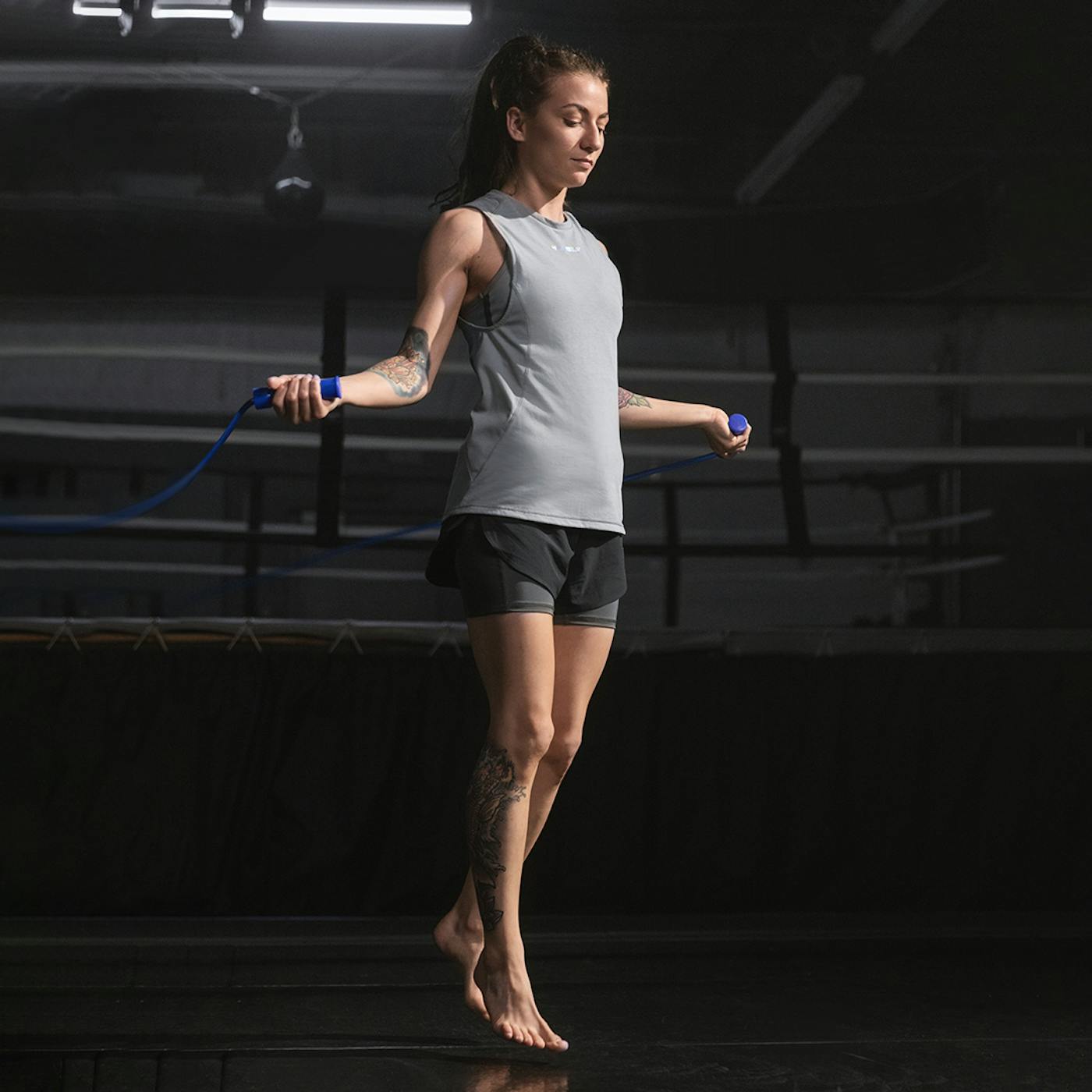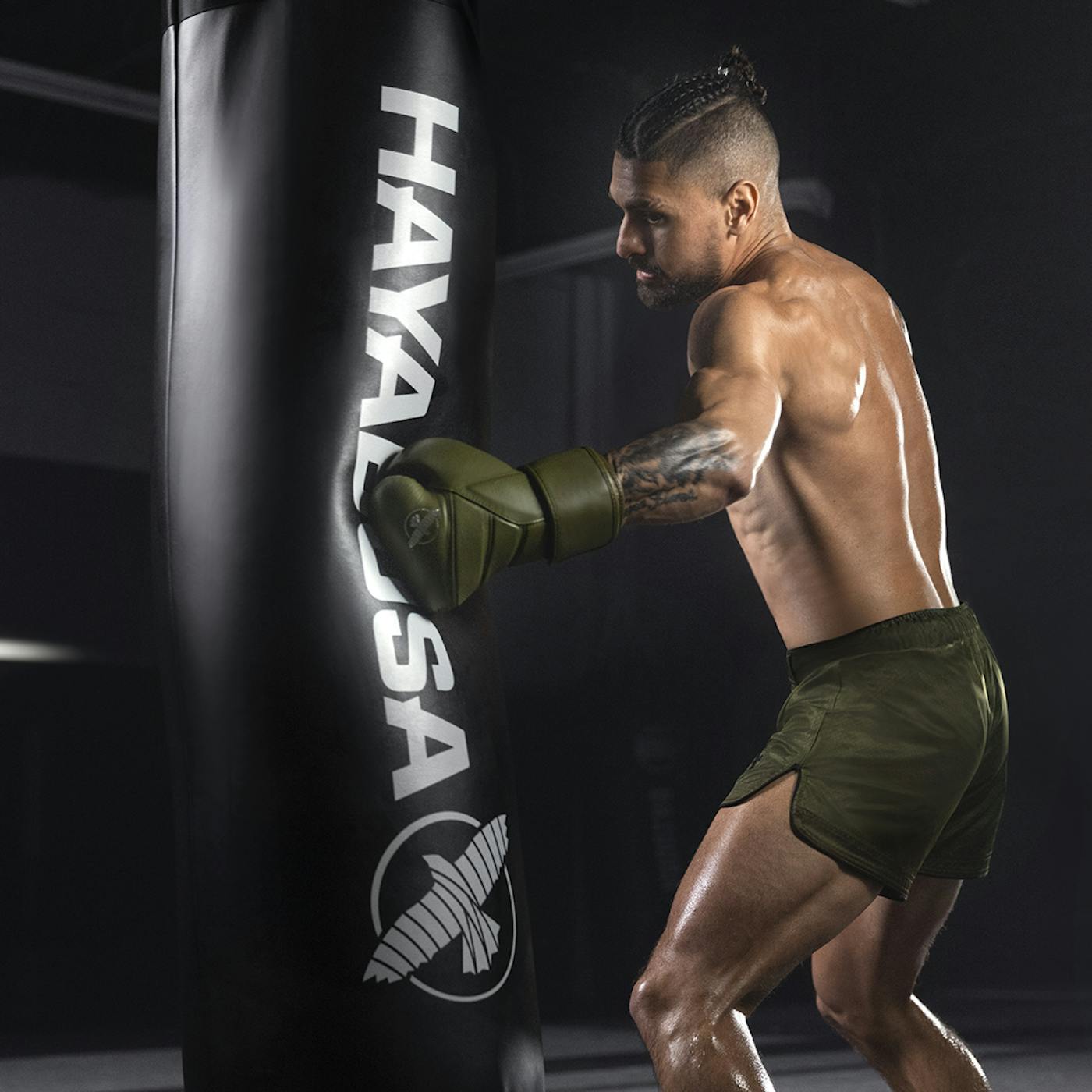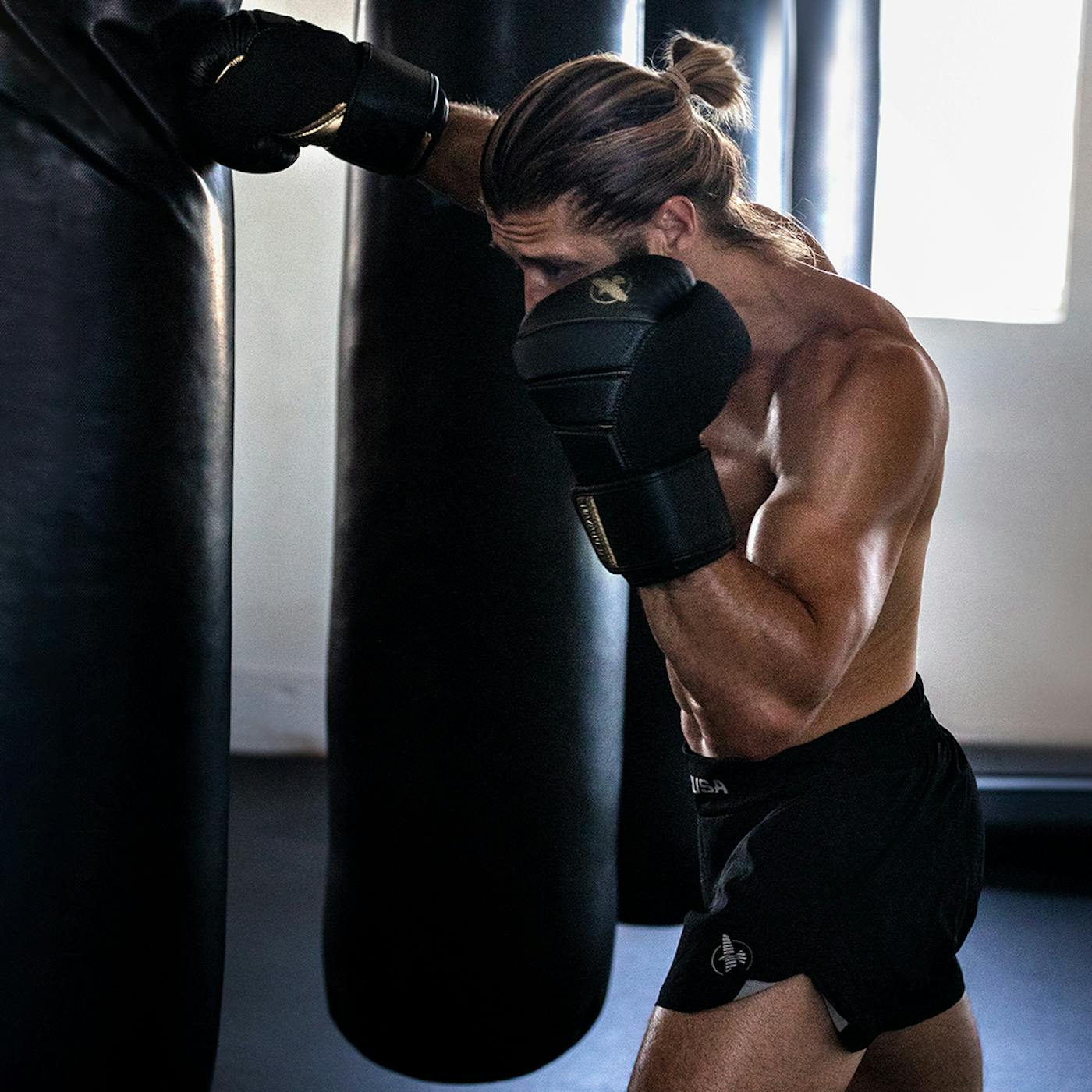Boxing began back in the day of ancient fighters as a means of self-defense. While the origins of the sport still hold true, boxing has risen significantly in popularity as an everyday fitness trend over the past couple of decades.
With constant gym openings and expanding at-home gym possibilities, boxing is a workout that can be adjusted to every location and fitness level. However, though largely known as an intense cardio workout, people also want to know: Does boxing build muscle?
In this blog, we’ll explain what it takes to build muscle and why boxing is an excellent choice to gain strength, power, and confidence every time you work out.
Understanding Muscle Building When Boxing
Muscle building, otherwise known as muscle hypertrophy, is when muscle cells grow in size. Or, to expand on the science of it, muscle hypertrophy is the result of muscle protein synthesis exceeding muscle protein breakdown.
This is achieved through both protein intake and resistance training with the goal being a positive net protein balance. Key features of resistance training include changing the intensity and volume of physical exercise, the number of weight lifting repetitions and sets, movement and pace, and other factors that contribute to how the muscle adapts and expands.
Many of these common principles of resistance training apply when boxing. Boxing training begins with a calisthenic warmup, transitions into multiple rounds of high-intensity interval punching, and is followed by a cool down. This typical routine changes the intensity, pace, and repetition to challenge the muscles and prompt growth.
How Boxing Engages Your Muscles
One of the many benefits of boxing is it engages every part of the body. Then, with the additional weight of boxing gloves used throughout the workout, it automatically builds strength with every session. Here’s a breakdown of how boxing engages the muscles throughout the body:
Upper Body
The standard boxing stance requires the upper body to be engaged at all times. Even when not actively punching, the arms are held close to the face, and the fists closed into tight fits.
Meanwhile, the punching series of jabs, crosses, hooks, and uppercuts engage shoulders, triceps, biceps, and back muscles all at the same time. Performed quickly in repetition over several minutes per round helps to fatigue the muscle. This stimulates a repair response in the body, eventually leading to muscular hypertrophy.
Similarly, defense positioning works the entire upper body with blocking movements, slips, bobs, and weaves to avoid attack. This challenges reflex time and hand-eye coordination, while also keeping the body in active mode to defend against punches from sparring partners and swing backs from hanging bags.

Lower Body
In addition to the upper body, a boxing workout also helps to strengthen leg muscles through the constant movement needed to pivot and dodge punches, as well as shuffle around the mat. This activity strengthens the legs, glutes, and calves.
Plus, boxing warm-ups often include a series of squats, jumping jacks, jogging, and/or burpees all of which reinforce lower body muscles to build power and agility.
Core
It’s important to keep the core tight during any fitness routine, and it’s no different for boxing training. An engaged core will help to prevent injury to the lower back when transferring power from the lower to the upper body.
Also, core tightening aids in balance and power generation, strengthening your center ground with every movement.
Science-Backed Evidence Showing Boxing Consistency Matters
Several studies illustrate the impact that boxing has on building muscle. While many consider traditional weightlifting as the quickest way to build muscle, there is evidence supporting muscle gains with a full-body workout like boxing.
One study shows evidence of lower body strength having a “moderate to strong positive and significant correlation” to peak punch force. In amateur boxers, consistent training was also proven to improve lower body strength and positively influence punch capacity without increasing total body mass.
Another study conducted by the International Journal of Exercise Science determined strength training frequency had a positive effect in creating lean mass and strength in both men and women who participated in high-frequency training. This included training each muscle group three times per week with three total body workouts.
Additionally, boxing provides other physical benefits including improved coordination, agility, and cardiovascular fitness. When choosing which exercise is best for you, it doesn’t have to be an either/or decision. Boxing is equally valuable to complement weightlifting or as a standalone workout for muscle gain.
Want to learn more about maximizing your boxing workouts? Read our blog post on The Power of a Heavy Bag Workout.

Tips for Building Muscle with Boxing
When building muscle with boxing, a strong and steady pace works best. Here are a few quick tips to get the gains up in a healthy way:
- Focus on proper form and technique - Listen to your body as you challenge yourself to gain muscle and develop speed. Avoid going too hard too fast as it can lead to injury.
- Incorporate strength training - Complement your boxing workout with strength training sessions. Whether it’s push-ups and squats as part of your regular warm-up or certain days designated for weightlifting, switch up your routine to include strength training.
- Maintain a balanced diet with adequate protein intake - Building muscle is partially about following a protein-rich diet. Add lean protein like chicken, eggs, yogurt, and grains into your everyday meals.
- Prioritize rest and recovery - Muscles need time to recover, so schedule in rest days between workouts. On these days, skip weight training exercises, but add in yoga, stretching, walking, or other low-intensity activities if you still want to move the body.
Gear Up for Gains with Hayabusa Boxing Gloves
When introducing boxing to your exercise regimen, ensure you have the proper boxing equipment for maximizing muscle building. This includes finding the right fit for boxing gloves.
Boxing gloves range in weight and size. Generally speaking, beginners should start with a lighter-weighted glove as they build muscle and advance to a heavier pair.
However, boxing glove size is also dependent on body weight. Boxing gloves that are too light can throw off your balance and impede strength building. For the optimal fit, take accurate hand measurements and refer to the boxing gloves sizing guide.
Also, when on your boxing journey, remember shadow boxing sans gloves also remains an effective workout and is beneficial in building muscle.
Hayabusa H5 Boxing Gloves

Hayabusa Talon Boxing Shoes

Hayabusa Men’s Lightweight Training Shirt

Hayabusa Hexagon Youth Fight Shorts

Build Muscle with Boxing
Does boxing build muscle? The answer is a resounding yes. It’s a fun, engaging full-body workout that calls every muscle into action.
With its resistance training aspects and scientific evidence backing up how it’s impactful in building lean mass, keep consistent with your boxing routine. In addition to strength, building muscle will enhance your power and performance with every punch.
Ready to unleash your inner fighter? Check out our collection of high-quality boxing gloves to get started!



